10 Gems of Indian Civilization
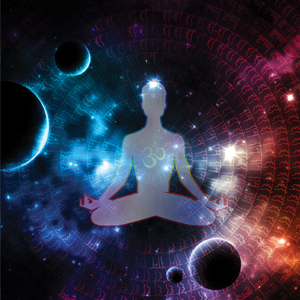
Psychiatrist PAUL R. FLEISCHMAN, winner of the distinguished Oskar Pfister Award from the American Psychiatric Association, a student of India for over forty years, a Vipassana teacher, and author of several books including Cultivating Inner Peace, highlights ten gems at the crux of the Indian heritage.
What exactly defines Indian culture? Does it contain some unique value? Who speaks for Indian culture?
There has been a long history of non-Indian foreigners who became entranced by and immersed in Indian culture. Their list goes back to the dawn of recorded history—from Alexander the Great to the Chinese with their interest in Buddhism, as also to Arab and Persian intellectuals who visited India and became not only recorders of Indian culture but admirers of it as well.
Although notorious for imperialistic oppression of India, the British Raj was also filled with Europeans who became devotees of the sub-continent—Annie Besant, the Theosophist; Charles Freer Andrews, Gandhi’s intimate co-worker; Verrier Elwin, the anthropologist and folklorist; Sir William Jones, the scholar who brought Sanskrit to the attention of the Western world; and Mark Twain, the author and traveler.
Today many Indians, both in India and around the world, have become uncertain about how to define their culture and their identity within it. They may be highly familiar with one aspect of their culture, yet may have lost contact with other aspects of it. Some feel a need to adopt a chip-on-the-shoulder pride in everything Indian. Others want to distance themselves from their ancestral land, which they imagine to be a place of wife-burnings, farmer-suicides, and Naxalite violence.
For all the confusion about what makes someone Indian, here is someone who is genetically non-Indian, but who nevertheless feels Indian on the inside.
I grew up in post-World War II America that was proud, self-satisfied, and parochial. The only time I heard India mentioned in my childhood was when one of my parent’s friends visited India. She showed us photographs of large caves that had been chiseled out of solid rock for people to meditate in them. I was totally fascinated by this image, although I had never heard of meditation.
At University of Chicago where I majored in psychology, I had to take a year-long course in non-Western Civilization in order to study what aspects of psychology were universal and what were merely cultural artifacts. I signed up for Chinese civilization but soon found that course was taught in an antiquated manner based on textbook memorization. After a few lectures, I dropped it. Soon after, I stumbled into the Indian Civilization course which was well into a few classes.
I came to the lecture hall late and sat in the back. Many words on the blackboard were from previous lectures and made little sense to me. I had never heard of the language, Sanskrit, the topic of the lecture. I felt a wave of frustration and alienation sweeping over me as I could not understand what was being said in the lecture. I stopped trying to listen, but surprisingly,
the lecture soon flowed up to me from the podium. I realized I was hearing concepts I had intuited or imagined all of my young life but had never heard in public before, nor found any outside corroboration for. By the time the lecture ended, I had become a devotee of Indian civilization. About 45 years later, this interest has not dimmed.
I vividly recall my first impressions of India. The year was 1970, and I was a medical student at the Albert Einstein College of Medicine in New York City which, at the time, was offering fellowships for two students every year to study in a foreign country. On a whim, I wrote an essay explaining why it would be important for me to study Ayurveda in India. It was a shot in the dark. Besides, I didn’t really want to go to India. But as it happened, the Albert Einstein College of Medicine
Fellowship Committee was free-spirited enough to give an eccentric student a small pile of money to study Ayurveda in India.
When I arrived in Bombay in the wee hours of the morning, ceiling fans were rotating in the heat and men in blue uniforms left over from the Raj were officiating at the airport. Some medical students had come to receive me, and as they drove me through the streets of Bombay in the early morning and my eyes glided over men in turbans, bullock carts hauling turpentine canisters, ornamental arches over windows of apartment buildings, milky colored cows ambling across the very lightly trafficked streets, lines of women in electrically multicolored saris waiting to fill metal pails with milk, I immediately felt that this strangest of places was my place, that I belonged here, that I knew it very well and that I had come home.
To embrace the wonder of Indian culture is not to overlook its problems or to romanticize its deep shadows. By no means does everything in India appeal to me. In fact, many of the things that I do admire about India also cannot be said to be absolutely unique to India. Take, for example, Gandhi’s invention of Satyagraha. Those whose knowledge of Gandhi is limited to the Attenborough movie often think of Satyagraha as an essentially Indian idea. But as Gandhi himself emphatically informed us, he was explicitly guided by the essay, On Civil Disobedience, by the American, Henry David Thoreau.
So, when I talk about my admiration for and identification with Indian culture and civilization, I am not referring to something that is precisely and clearly separated from the rest of world culture and civilization.
I’ve identified ten features of Indian civilization that I believe are relatively potent, if not absolutely unique, in India, and are of great importance to me personally. I share them that they might instill a feeling of pride in India’s cultural inheritance without having to turn a blind eye to its many problems.
1. Cosmic insight: credible knowledge about creation
India is the only culture whose traditional knowledge about the nature of the universe bears any resemblance to a scientific understanding. Of the many truly awesome insights that came out of ancient India, we must take into account the relatively high level of accuracy about the world’s origins and nature which hold up remarkably well when compared with our contemporary insights from physics, cosmology, and other basic sciences.
To measure time, almost all other civilizations and people right up to the 20th century use time scales that are based upon human life span and the cycle of generations. It is only in ancient India that the real dimensions of time are glimpsed. The Kalpa or the day of Brahma, which lasts about four billion years, is remarkably close to our current estimate about the duration of life on earth. The cycle of all Kalpas, however, lasts about three hundred trillion years. In modern cosmology, we think of the Big Bang as having happened approximately fourteen billion years ago, and given the fact that many cosmologists today think of the universe as a series of Big Bangs or a multiverse, ancient Indian cosmology begins to seem prescient.
Traditional Indian knowledge also understood that the universe is dynamic and changing. Albert Einstein himself originally conceived of the universe as static. A dynamic universe that is growing and expanding only entered Western cosmology in the 1920s when Edwin Hubble discovered that some of the so-called stars were actually entire galaxies, and that all the lights in the sky were racing away from each other in a cosmic expansion. But this seems to have been known to ancient Indians. As far back as the Buddhist Suttas (approximately 500 years BC), the universe was understood to be a hubbub of constant change of gigantic proportions and of very long time scales. These insights were apparently reached by Buddha directly through his meditation. He envisioned a universe without beginning or end, but with cycles of expansion and contraction, an idea championed today by cosmologists Steinhardt and Turok, from Princeton and Cambridge Universities respectively.
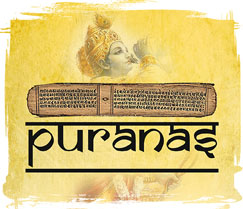
Along with time, space, and dynamism, ancient Indian science had insight into the fact that the universe consists of atomic and sub-atomic particles that eventually collapse into vibrational waveforms. The particle-wave duality of light is one of the great discoveries of 20th century physics. Two thousand five hundred years ago, Indian seers had already described the human body and all matter as consisting of tinyparticles, kalapas consisting of even tinier particles, uta-kalapas, which consist of even tinier oscillations and vibrations. It appears that deep reality-based meditations of ancient India revealed to ancient Indian civilization many of the discoveries that Western science considers to be new.
In ancient India, the universe was already understood to be a matter-energy combination in which vibrations became particles of matter, in which particles of matter built up the compounded world, in which the compounded world was a shifting arena of incessant change, all located in a vast, dynamic, and unthinkably timeless format. The Suttas, the Vedas, and the Puranas overlap and share different aspects of these stunning revelations. The fundamental coordinates of reality in ancient India dramatically differed from the fairy tales of all other civilizations, and can be viewed as having essential, if not precise, accuracy.
2. Microcosm and macrocosm: the innately intertwined individual and the universe
One of the tenets of Indian civilization is that the human mind and body is a microcosm that reflects the macrocosm of the entire universe This attitude forms the essence of Vedanta, one of the great philosophies of Hinduism in which the individual learns to see himself or herself as containing, or contiguous with, the soul of the universe. The Buddha’s teaching of Anatta, or no individual soul, is related to the Vedanta in that the individual comes to understand the impersonal and changing universe by deeply examining his or her own mind and body. Similarly, in Hatha Yoga with its Samkhya philosophy, the same belief pertains that by coming to deeply intimate terms with one’s own mind and body, one comes to terms with the ultimate reality.
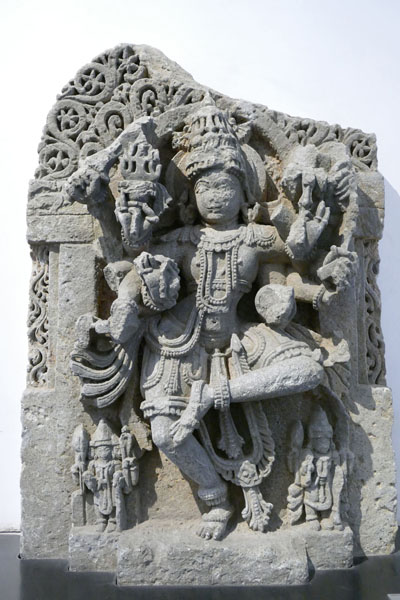
The Buddha’s Dhamma, Hindu Vedanta,and Yoga are all quintessentially Indian and share the attitude that religionis not about fawning in front of an external power source, but rather that the body and mind are the best and truest laboratory for spiritual life.
3. A reverence for contemplation and revelation
Correlated to the idea that the individual mind and body form a gateway through which one enters universal truths, we find in India a traditional reverence for quiet and contemplative activity. For example, in the midst of a raging and multifaceted cultural and political revolution, Gandhi spent one day a week in silence; he also spent time every day spinning and worshipping. Similarly, in midst of a whirlwind life that had him travelling to every corner of the inhabited world, Rabindranath Tagore remained a devoted meditator.
Although Nehru disassociated with organized religion, I hear in his prose the highly valued contemplative
streak.
In India, contemplation was never passivity for its own end. Traditional Indian contemplations and meditations were based upon a faith that they were the doorways to revelation of ultimate reality. Quiet hours are valued because of valuable life force that contemplation can kindle. Quiet activity is not an absence or a withdrawal, but a way to nurture valued spiritual experience.
4. The fusion of the ethical and the divine
Possibly the greatest discovery of ancient India, or in any case its most influential realization, was “the fusion of the numinous and the ethical.” This phrasing comes from the writing of Mircea Eliade, a mid-20th century scholar who spent much of his career at the University of Chicago. Eliade emphasized how much of religious life of Middle Eastern faiths revolves around the wish to gain power and security through affiliation. The devotee feels helpless, but gains control by bribing, cajoling, or appeasing some divine power. Morality either does not enter into this religious stage, or is included only as one more way to seek favor or to demand protection from the Power Source.
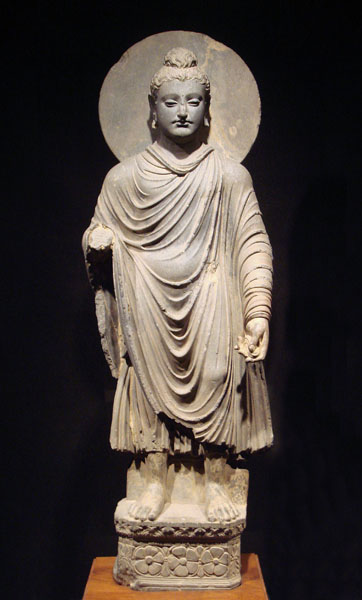
In mature religious development, however, the devotee experiences the divine through ethical activity, rather than seeking favors or forgiveness from It. Here, the ethical is experienced as intrinsically connected to the divine. Such a fusion of the two is first clearly locatable in ancient India. We hear it formulated in Upanishadic writings, in Jainism, and in Buddhism. In these religious worldviews, ritualistic appeasement, and bribery disappear from the pinnacle of religious practice. Self-purification becomes the broadband high-speed access to what is holy or sacred in life.
Of particular note is ancient India’s emphasis on the emotion of peace or equanimity as central to purification. Equanimity is seen, in ancient Indian thought, as the true measure of one’s spiritual attainment. A person can be deeply at peace with themselves only if they have already relinquished hate, fear, passion, and other unsettling psychological states. India has always been the land of people like barefooted Jain munis, who continue today to be witnesses to inner peace as they walk along truck-infested highways.
5. Blending of the sacred and the mundane
From the first, ancient Indian culture and spiritual life emphasized the continuity of spirituality with daily life. This is most famously remembered today when people think about the Bhagavad Gita with its emphasis on Karma Yoga. This is a worldview in which community service and worship of the deity are the same thing. Here we have not only a fusion of the numinous and the ethical, but an emphasis on social action as the most important form of the ethical.(This attitude is emphasized but is by no means unique to India) Gandhi’s reverence for the Gita with its emphasis on Karma Yoga brought ancient India alive in the twentieth century.
East Asian Buddhism is emblemized by a statue of the cross-legged Buddha sitting still. But this iconography of an immobile Buddha came about as a later development. Original Indian Buddhism was free of any image of the Buddha. It represented the Buddha as a physically and socially active teacher concerned with reaching out to his fellow human beings. He is described as walking over thousands of miles, speak-ing and teaching with vigor and commitment. Meditation is Buddha’s formative activity, but compassionate social action is his expressive activity.
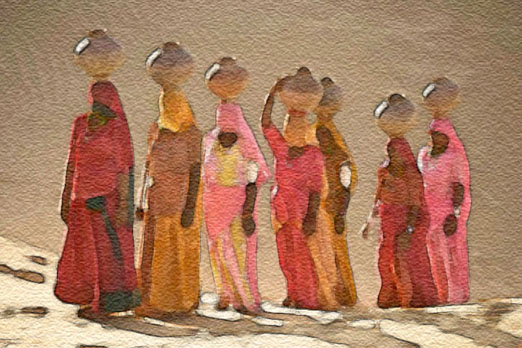
It is characteristic of Indian culture to reduce the boundary between the sacred and the profane. This is also well-expressed through India’s classical music forms which paradoxically combine sensual entertainment
with exquisite other worldliness. North Indian classical music with its fusion of Hindu and Muslim roots is highly ornamented yet leads the listener upwards towards an auditory sense of divinity that has no final form. In architecture, the Jain temples of Mt. Abu combine a riotous sensuality with a subterranean asceticism. In Hatha Yoga too, Indian culture combined heightened awareness of bodily life to spiritual rather than sensual ends.
6. Spirit of the people
Many years ago, after a long absence from India, I met my dear old friend, the Gujarati poet Makarand Dave, at an obscure spot in a small and impoverished city in the interior of the sub-continent. Because I had not returned to India for a number of years, the bony people, the worn and tattered clothing, the not-infrequently misshapen limbs, the gaunt cattle and buffalo, all struck me with heightened impact. I expressed to Makarandbhai my anguish over the plight of India’s hundreds of millions of very poor people. Makarandbhai, who was a world-class poet, and familiar with conditions in Bombay, New York, and California agreed with me. But then he suddenly added out of the depths of his Indian gnosis, another dimension. He told me, “The poor people of India are like shrubs on a windy mountain top. The wind constantly beats them down. They grow deformed and crooked and it looks like they will never be able to survive. But whenever you come back to this mountaintop, there will always be shrubs poking their heads up towards the sunlight despite the wind. The poor people of India are shrubs in the wind. They can never be beaten down and defeated.”
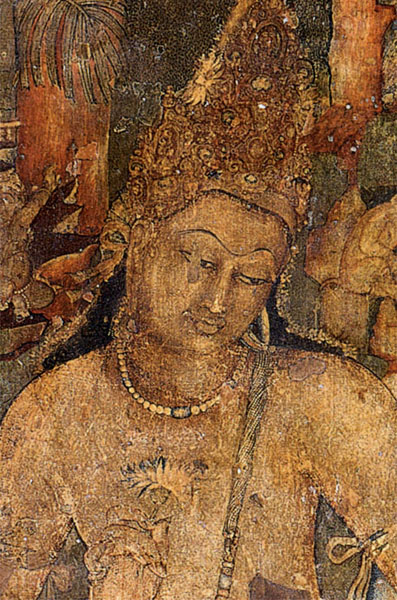
India is also its unlettered villagers. Its spirit is also carried in the wind-bent shrubs. Every time we see a poor woman carrying on her head for miles a brass pot filled with water while she moves along swiftly despite her heavy burden, we are reminded that the common people of India are constantly signaling to us with a special élan. Ancient India carried forward and brought into modern times by the people of India contains some irrepressible nobility, some undefeatable endurance. This spirit can also be found in Guha in the Ramayana, and still emanates today from many a Kutchi goat herder, Rabari camel trader, or Tamil farmer planting rice under the hot sun. Of course, I do not mean to imply that poverty by itself is valuable or virtuous.
7. The sacred geography of Bharatavarsa
India is not merely a place, it is a sacred geography. When we read the Ramayana and follow Rama in his quest to rescue Sita as he travels down the spine of the Deccan, we are traversing a physical land as also a sacred space. When we take a bus up the unending switchbacks that leave us feeling nauseated and terrified, climbing from New Delhi up to Badrinath in the high Himalayas, we are going sightseeing but we are also entering into the realm of the sacred origins of the Ganges. Hardly a nubbin of countryside rock in India lacks its worshipper. The great triangle of the sub-continent that extends south from the Himalayas to Lanka is one gigantic holy land whose place names echo with spiritual legends, whose hilltops are jeweled with temples, and whose rivers express the deeds of mythic gods and goddesses.
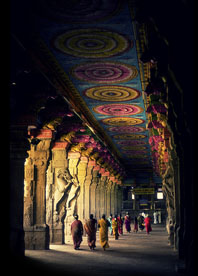
The India we see today is an excoriated and depleted relic of the ecological richness of India a mere hundred years ago. In spite of that, India retains an especially haunting natural beauty that seems to call us into different dimensions of reality. Ganga is polluted, and yet when we stand on its banks in Hardwar among hundreds of thousands of pilgrims, and watch tons of gallons of water sweeping past us at high speed reuniting the snows of the Himalayas with the fertile Gangetic plains, it is hard to doubt that Ganga is a sacred river. When we stop at a chai shop at a dusty road in a little village of Nowherepuram, it is hard to doubt that somewhere above us and around us are colleagues of Jetayu and Jaambavaan. The sacred geography of India reflects and echoes the culturally inculcated spiritual perceptions of the land.
8. A nest for humankind: all are welcome
How many times have I heard in India, “Guest is God”? At its best, India culture has been welcoming, absorptive and elastic. Most things that we consider Indian, like the Taj Mahal, are a combination of many streams of culture. India has welcomed not only cultures but people—starting with the Sanskrit-speaking Asian Aryans, and including in more recent times Jews, Parsees, refugees from Sindh, Punjab, and Bangladesh. There is no one real people of India. Instead we should say, “the peoples” of India. Even within one linguistic zone, there is ethno-cultural variation; for example, the way the mountain peoples of Kerala’s Western Ghats differ from the fishing peoples
of its coastal villages.
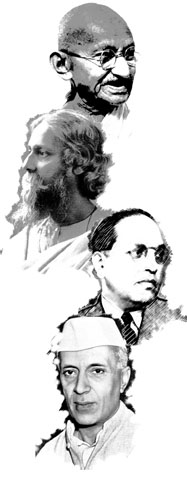
After Rabindranath Tagore had won the Nobel Prize, and become world famous, he started a university in Shantiniketan which he called Visva Bharati and whose motto was, “Where the whole world meets in one nest.” Tagore’s welcoming spirit was a continuation of the Buddha’s Metta, an all-embracing loving-kindness that welcomes everyone into its fold, as also of the Hindu axiom, Vasudhaiva Kutumbakam (“The whole world is my family”)
It used to be a cliché that India had absorbed the Dravidians, the Aryans, the Turks, the Persians, and the Moghuls, but had been unable to absorb the British. Recent reevaluation of this cliché has reminded us that many British did indeed dive into Indian culture and lived the rest of their lives in their new motherland. Gandhi’s friend and follower, C.F. Andrews and Tagore’s secretary, W.W. Pearson are examples of this. Recently the great scholar Ramachandra Guha has written a definitive biography of Verrier Elwin, an Englishman who had originally come to India as a Christian missionary intent on converting the “heathen” and who instead got converted to being a follower of Gandhi, and finally became an Indian citizen.
9. A land of great beings
I still cannot get over the words by which Emperor Ashoka brought words of Dhamma to the far edges of his Empire and which are chiseled into many stone pillars scattered over India and carved in numerous scripts well over two thousand years ago. Ashoka’s ancient words are devoid of the primitive or archaic and sound modern, universal, and timeless. Of particular note is his emphasis on non-harmfulness, social service, compassion, and the desire to create the good world here on earth. “Liberality to friends…not injuring living beings…avoiding disputes, purity of heart, loyalty…no one should disparage other sects to exalt his own…self-examination…” As pointed out by scholars who have critically examined the few surviving paragraphs of Ashoka’s political will, the great King of ancient India should not be misconstrued as a Buddhist. He was a humanist universalist. He did not refer his beliefs to Buddha, but to Dhamma, which means the empirical truth or universal law unrelated to religion or theology.
My reverence for India and my sense of being a participant in its universal culture derives partly from the influence of the four great Indians of the 20th century.
Gandhi was a complex figure whose life encompassed many successes and failures. Praise of Gandhi is a cliché, but India is more remarkable for its abandonment rather than its loyalty to him. His economics of village-based agrarian cottage industries was abandoned immediately. His pacifism was left behind during armed clashes with Portugal, China, Sri Lanka, and Pakistan, as realpolitik swept away his dreams.
His opposition to affirmative action was swept aside. Nevertheless, he remains a great symbol of self-
sacrifice in service of peace.
Tagore’s poetry captures the sense of relationship that every human being contains between our individual selves and the faceless eternal cosmos. Tagore alone has been able to create convincing and moving poetry in which the author is positioned as a man, a woman, a child, a beggar, a warrior, a sadhu, and a lover of life. His poetry locates us in the coordinates of eternity even as it inspires us to embrace the moment.
Nehru was a prose poet, a historian, a tactician, and a freedom fighter who spent nine years in prison. As Prime Minister, he knew when to attack with force such as in the case of Goa or the Chinese border, and he could also choose to be a Gandhian such as when he respected the U.N. borders with Pakistan despite India’s superior military strength and probable victory from all-out attack during Partition. Indeed, he cast an air of dignity over all he did.
Babasaheb Ambedkar parlayed his plight from a low caste Mahar shunned in school to becoming the chief architect of the Indian Constitution. No one, not even the British, dared to confront Gandhi with such strength as Ambedkar did over the issue of affirmative action. Without Ambedkar, India’s freedom would not have extended to all the people of India. Yet he was free of violence in word and deed, and his most fiery weapons were constitutional law and spoken language.
10. The ability to evoke and express universal truths
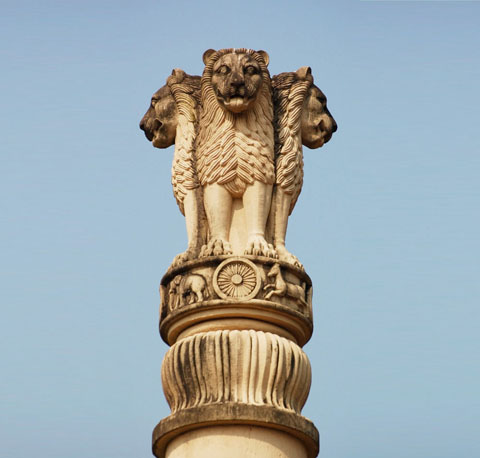
To me it seems that the greatness of Indian culture is marked by its ability to evoke and express universal truths. Despite its chauvinistic proponents, chauvinism isn’t Indian. After Amartya Sen won the Economics Nobel Prize in 1998, he returned to writing philosophy. In his book The Argumentative Indian, he points out that the Rig Veda is intrinsically anti-authoritarian and based more on questions and suggestions than on answers.
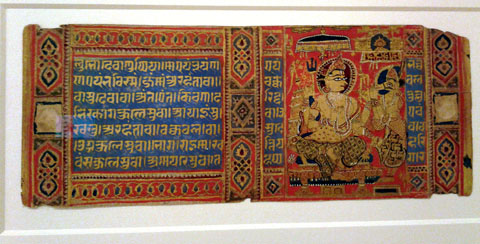
Indian culture is a sumptuous offering to people of all backgrounds. Like an ancient mosque of lacy arches and towering minarets that contains no one image, so that the supreme object of worship can never be visually defined, but resides in the ineffable realms of beauty, stillness and reverence, so the richness of India cannot be reduced to domestic behavior patterns or quaint convictions.
From the first Sanskrit scholar who awakened me even before I could comprehend him, to my doctor professors and colleagues in Bombay, and to my Vipassana teacher S.N. Goenka, India has been generous to me. India has a long history as a host, a nest, a light. I feel lucky to have received its glow. Although I may only see it deep inside from the outside, I believe I am correct to construe its essence as the giving of gifts.
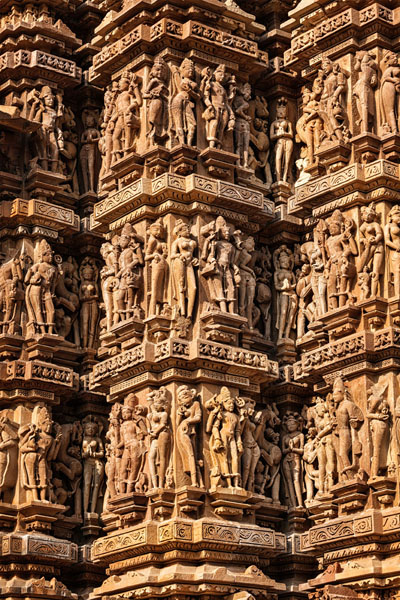
Paul R. Fleischman, M.D. trained in psychiatry at Yale University, was in private practice for over thirty years. He is the author of The Healing Spirit, Cultivating Inner Peace, Karma and Chaos, An Ancient Path, and other books. A version of this article first appeared in the December 2010 issue of Khabar. For a full version of this article, please visit our website at www.khabar.com
Enjoyed reading Khabar magazine? Subscribe to Khabar and get a full digital copy of this Indian-American community magazine.
blog comments powered by Disqus












